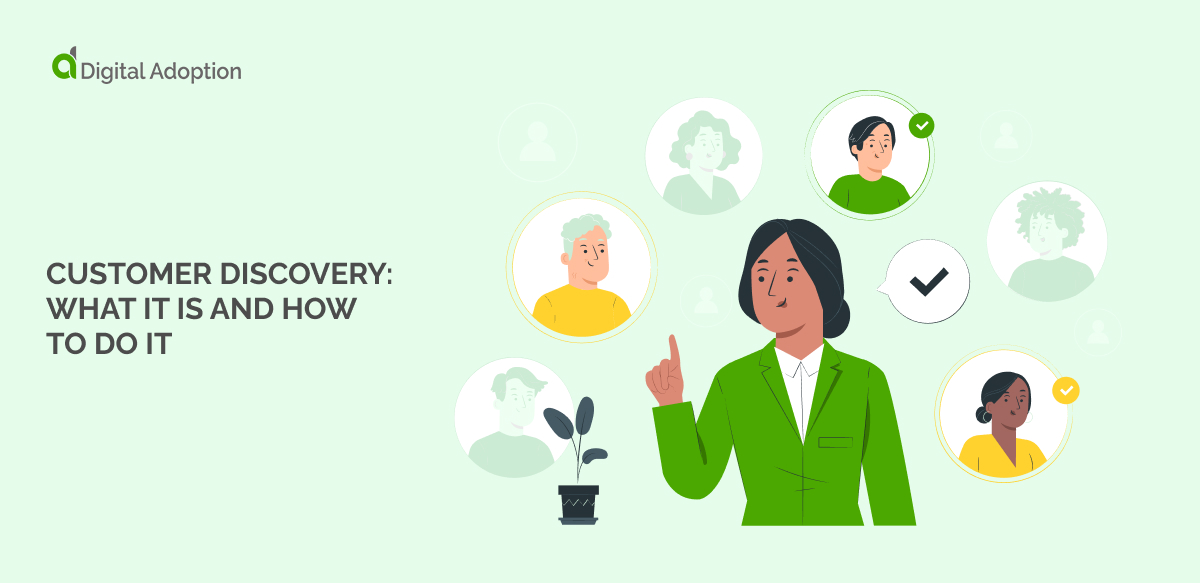Where are your customers hiding? They may be hiding in plain sight!
Finding the customers that need your services or products is both the problem and the solution and involves reviewing your core business assumptions to discover the best product market fit.
A recent study found that 45.9% of companies stated customer experience was their top priority over the next five years, showing how vital customers are to organizational success.
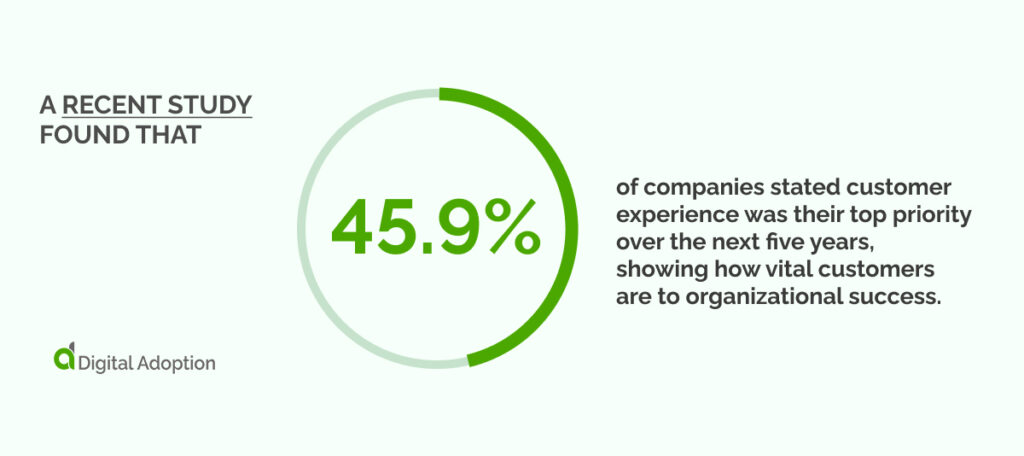
Customer discovery involves analyzing and solving potential customers’ problems while always putting the customer first.
To help you understand what customer discovery is and why it’s essential to helping your organization succeed, we will explore the following topics:
- Why is the customer discovery process necessary?
- The phases of customer discovery
- Customer discovery questions
- What do you do after customer discovery?
Why is customer discovery important?
Identifying a problem and creating a product or service without demand leads to loss. Hence, you must create a product or service that fits market demand. The best way to do this is by conducting customer discovery.
Let’s look at why you need to conduct customer discovery for your business:
It helps you to identify issues
During customer discovery, you interact with potential clients, learn their real problems, and change problem assumptions.
Let’s say you want to develop an app to order fresh apple juice. Customer discovery will help you answer the following questions about the app:
- Do people need a new apple juice app?
- Are there prospective clients who can order apple juice from the app?
- Should I change the apple juice app for another food type or add variety?
- What features can I add to the app to make it efficient or enjoyable?
Suppose you discover that apple juice is a product worth venturing into. In that case, the next thing is to find a solution and test your app, which will help you identify issues and make it a smooth experience to help you discover the most customers interested in your product.
It reduces the business failure rate
Customer discovery tells you if there is a market for your product or if it’s just a waste of time and money.
Only 45% of startups in the US survive until the fifth year, and only 35% make it to their 10th year.
Once entrepreneurs with great business plans get money from investors, they start the production process without customer input. They then test the products after the resources are in place for production.
Some months later, the entrepreneur discovers that customers don’t want or need the product, leading to failure.
Customer discovery helps you create a suitable product for customers
During customer discovery, you learn your customers ’ problems and how you can solve them. Using the information enables you to create an excellent product for targeted customers, increasing product adoption.
What is the customer development model?
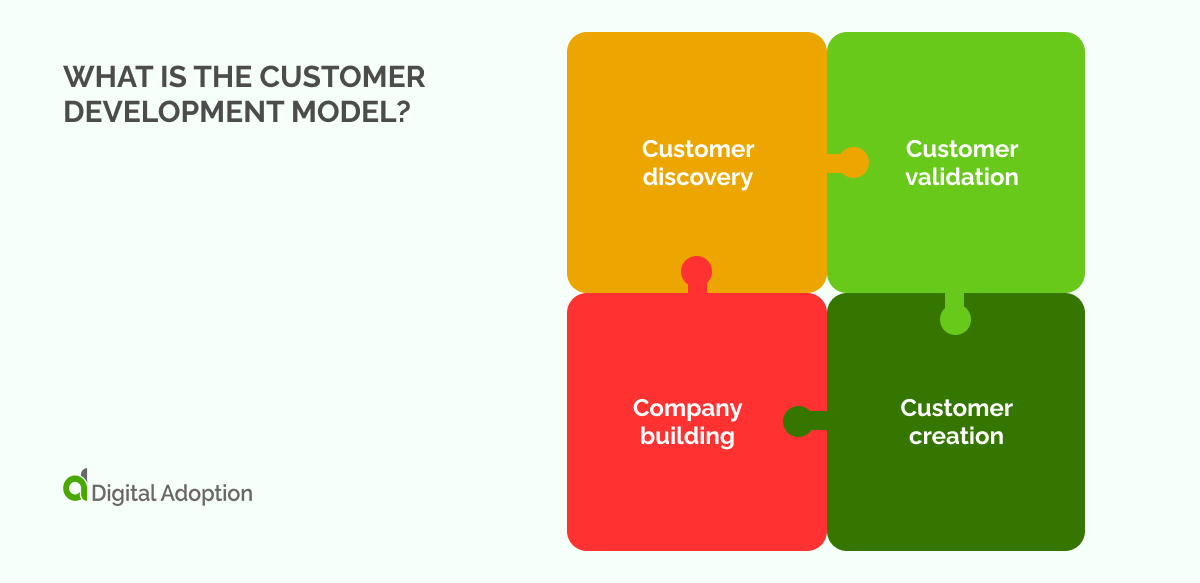
The Customer Development Model is a flexible and iterative process designed to reflect the uncertainty of starting a new business and entering new markets.
Treat the fundamental assumptions about your product and market as hypotheses that must be tested and validated during the customer development process. Doing so will help ensure that your initial ideas are sound.
This systematic process will create a loop for learning and discovery so that you can prioritize your work and improve the timing of launching and scaling your startup. It contains four stages:
Customer discovery
Ensure you prioritize understanding your customers’ issues, what they like, and how they make purchasing decisions.
Customer validation
Creating a standardized sales process is necessary for expanding a business.
Customer creation
Create interest and identify potential customers by promoting the product/service via a value proposition.
Company building
Concentrate on expanding your organization and implementing the business plan effectively to enable growth.
The customer development business model can help ensure your approach to customer discovery is systematic and successful.
The phases of customer discovery
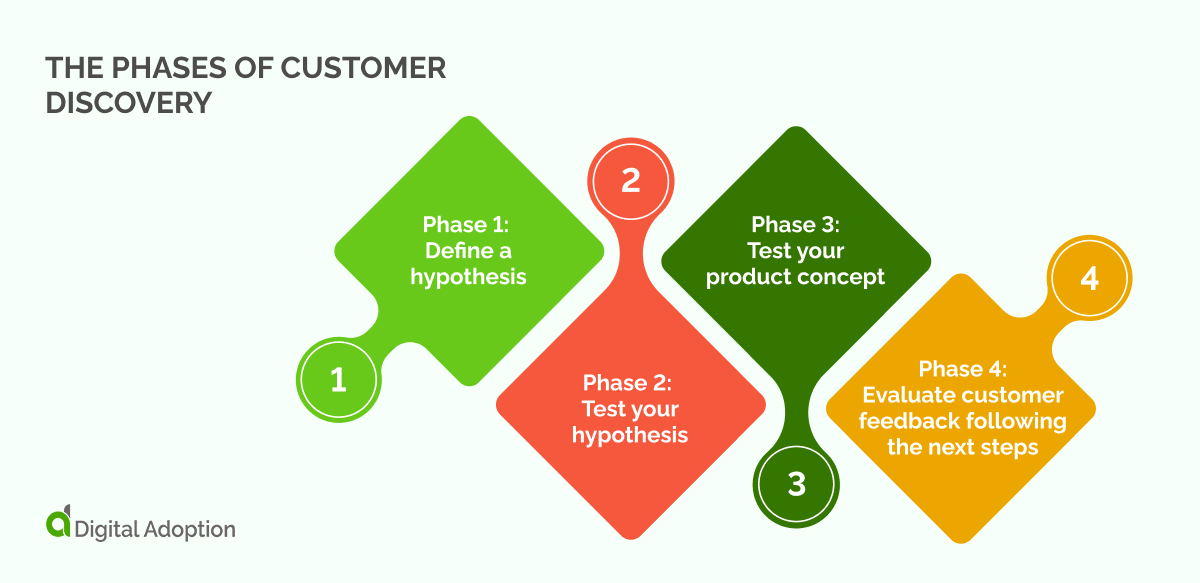
According to Steve Blank, the author of Four Steps to the Epiphany, where the basics of customer discovery first appeared, business plans alone cannot ensure the success of a business.
He introduced the concepts of Customer Discovery and lean methodology. These methods prioritize customer feedback over intuition and experimenting over planning for success.
Customer discovery has four phases. Let’s take a look at each phase, beginning with defining a hypothesis:
Phase 1: Define a hypothesis
A hypothesis defines the customer problem and solution that helps people understand what you want to solve. The theory you use should be clear and specific.
Use this formula to hypothesize: My idea solves_a problem_ by offering _a solution_.
For example, the business idea above solves the inconvenience of getting fresh apple juice by offering a new app to order from the tap on an app.
This example shows a minimum value proposition (MVP), a product with essential features that early adopters adopt.
A hypothesis also shows your product or service assumptions, e.g., problem, solution, customer-centricity, or prospective paying customers. You need to create a hypothetical customer to lay out your business assumptions.
When creating a hypothetical customer, include all their background information: age, career, interest, perspectives, and quotes on your business.
See the example of a customer persona below.
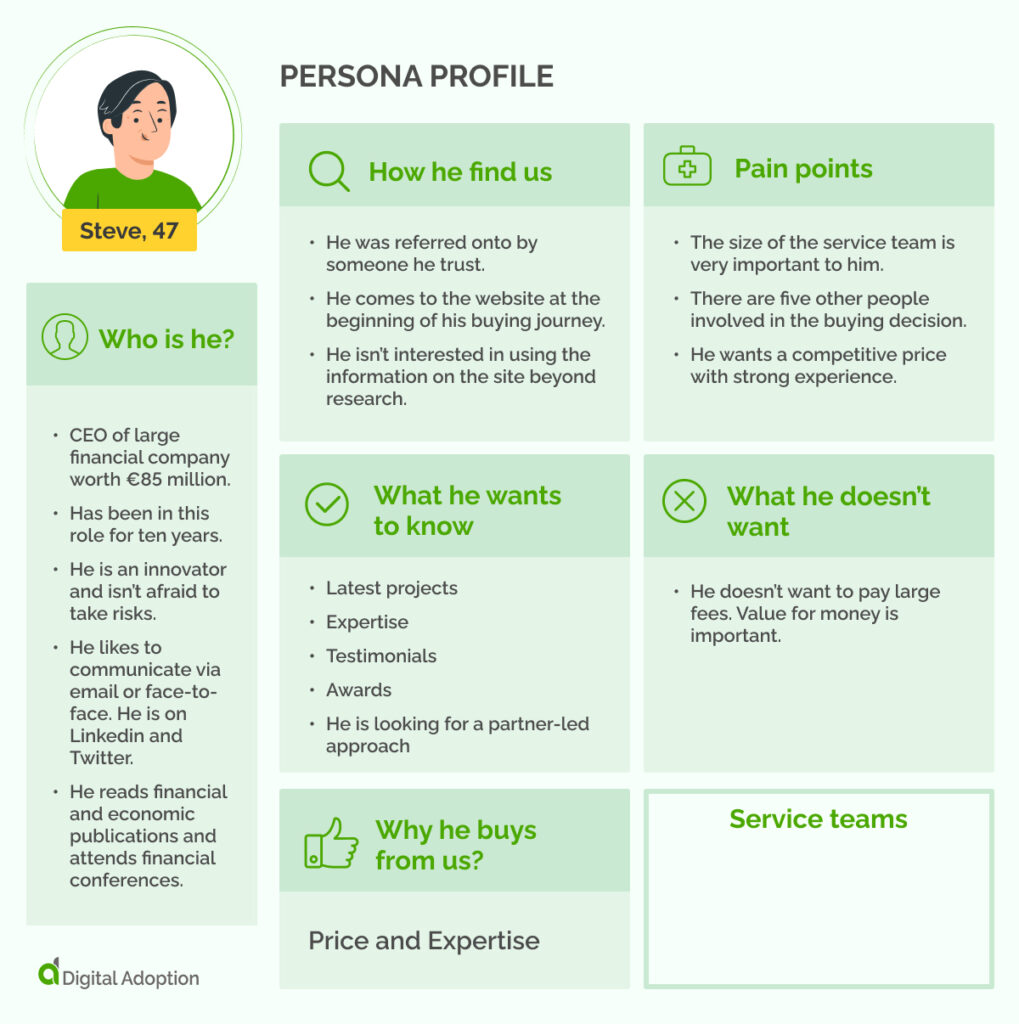
Phase 2: Test Your Hypothesis
The next step is to analyze your hypothesis with prospective clients. Here are the steps to follow when testing your hypothesis:
- Tap into your network: Use your contacts to test your hypothesis by building an inventory of prospective customers. A list of fifty names, regardless of their position or rank, is enough to test the theory.
- Prepare problem presentation: Create a high-level description of your service or product and invite your contacts to give feedback. Remember that your goal isn’t to sell but to get feedback on cost, performance, and efficiency.
- Gain customer insight: Ask in-depth questions beyond your contacts’ problems. For instance, how they spend their day, the performance of related processes, and the main expenses in your business category.
- Map market infrastructure: Attend conferences and trade shows by understanding your business environment. Also, talk to industry analysts and the media to know your competitors and trends in the market.
After completing phase 2, it’s time to test your product concept.
Phase 3: Test Your Product Concept
After understanding the product, you need to test and qualify the product concept by carrying out the following process:
1. Evaluate problem/solution fit
Ask questions, take feedback, and share it with your development team. For instance, some questions could be:
- How do you solve _the problem_ currently?
- Is the process working for your needs?
- What would improve your experience?
- What do you like or hate about _the product_?
2. Update product presentation
If the product or service almost solves the client’s problems, you could change some features. Create a new product or service that represents the recent changes.
Next, ask for feedback on the new product from your customers again.
- Test revision and product solution: You present the second feedback to your development team again. Test the revised problems and update your product development plans.
When you have tested your product concept, it is time to evaluate customer feedback.
Phase 4: Evaluate Customer Feedback Following The Next Steps
The final phase of the customer sales discovery process is to weigh the data obtained from the previous steps. With product solutions and the target market, you can assess if you are ready to start with current plans.
Answer the following questions to see if you are ready to move on with plans:
- Have I verified the customer’s problem?
- Have I demonstrated the product/service solution?
- Have I confirmed the business model?
If the answer to each question is yes, continue with your plans. If not, pause your plans and redo phase 2 and phase 3.
Customer discovery questions
Here are some questions to ask potential customers to discover their pain points and validate your solution:
- Are you willing to solve [problem] and why?
- How do you currently solve [problem]
- What do you love/hate about the process (of solving the problem)?
- How did you find out about [current solution/process]?
- How much do you pay for [current solution]
You can also gather demographic data (age, gender, income, role) and psychographic data (goals, interests, values, beliefs, personality).
Try to fit your interview within 15 minutes, or incentivize the survey like a free downloadable guide.
What do you do after customer discovery?
Once you have made a successful customer discovery, you can create the following:
- Create a problem statement: The client’s problem evaluation describing the nature of the client’s business problem.
- Develop a functional and non-functional needs list for the new product.
- Formulate a comprehensive revenue plan.
- Form a robust business plan.
These actions will help you ensure that your customer discovery will have the highest ROI in the shortest time, allowing you to learn from the process in the future.
Customer discovery tools
Customer discovery tools can make the process easier and faster.
Let’s take a look at some of the tools:
- SurveyMonkey is a user-friendly survey platform for creating and deploying surveys to your target audience. You can get feedback on a product idea from the target audience to see if it has any market.
- User testing has over a million testers to give feedback on your service or product. You will understand how to boost user experience and customer transformation to increase satisfaction.
- Hubspot persona generator will take you through creating a hypothetical customer persona for phase 1 of customer discovery.
Focus on quality, not quantity, with customer discovery
When performing customer discovery, the quality of the insights you gain into customer needs is more important than the quantity of customers.
It’s not enough just to talk with customers – you need to ask meaningful questions and listen carefully for clues that will help inform your decisions to deliver what they want.
By understanding what drives customer behavior, businesses can create products and services that better meet their needs.
Organizations will be in a much stronger position to develop successful strategies for growth and success when they possess this information.

